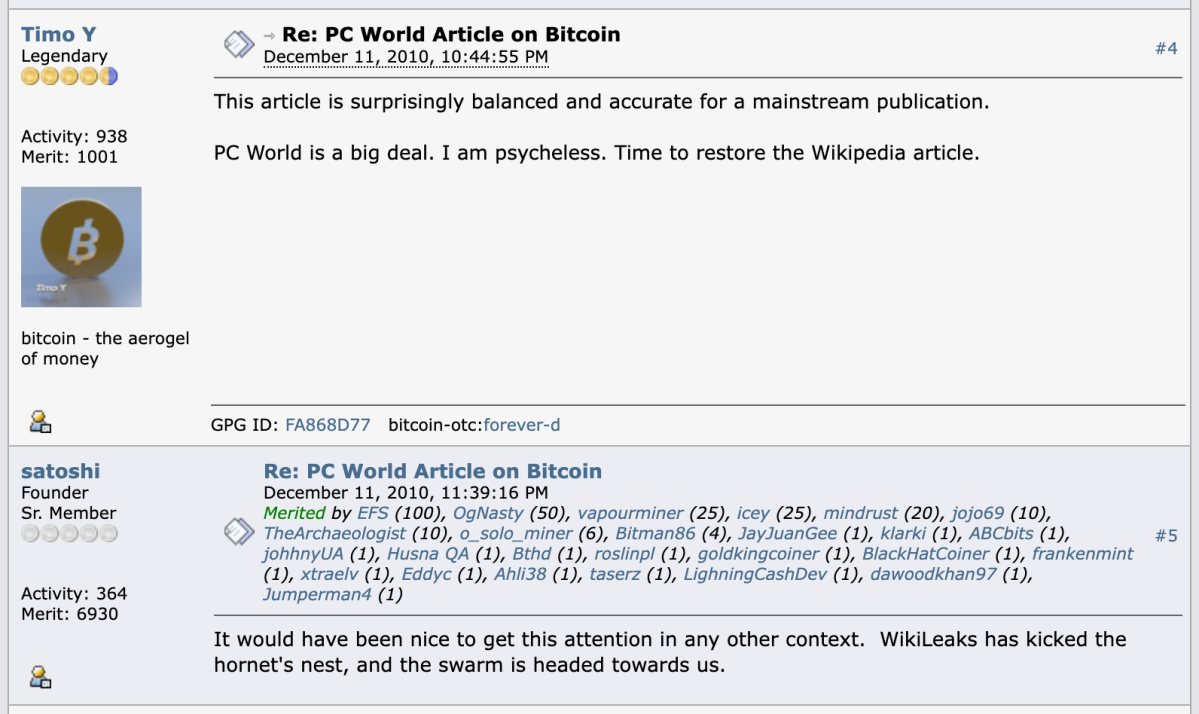As a media brand, especially in the tech sector, you are rarely actively involved in a historical moment. Even less frequently, you’re the trigger for that moment. But PCWorld unintentionally found itself in just that position, creating computer history back in 2010. Here´s what happened.
In 2010, Youtube was only five years old. Apple released the iPhone 4 that year. And in April 2010, the New York Times, The Guardian and Der Spiegel published controversial US military papers that were released on Wikileaks, making that platform a household name overnight. This was the tech landscape of 2010.
At that time, the virtual currency Bitcoin had existed for little more than one year. The few people who knew about Bitcoin were mining BTC on their home PCs (still possible back then), and the exchange rate for 1BTC was $0.20 to $0.30.
Bitcoin controversies over environmental impact and exploding GPU prices were essentially non-existent at that time. Instead, the buzz centered around Bitcoin’s mysterious, idealistic inventor (or entity) named Satoshi Nakamoto, who established the concept of a totally democratic digital currency that couldn´t be controlled by anyone.
It was Bitcoin’s unique decentralized nature that inspired a PCWorld freelance author to report that Wikileaks and Bitcoin may be able to work together.
With its growing reach, Wikileaks had been trying to collect funding through donations, but many of the major payment systems like Paypal refused to work with the platform due to its controversial nature. But what if Bitcoin could become a viable Paypal alternative?
PCWorld author Keir Thomas introduced that concept in a Dec 2010 article titled “Could the Wikileaks Scandal Lead to New Virtual Currency?“ The article was completely factual, and never advocated for Wikileaks in any political sense. Nonetheless, the story still raised the attention of Satoshi Nakamoto, who reacted one day after the story went live by posting his final public comment ever in an online forum:
“It would have been nice to get this attention in any other context. WikiLeaks has kicked the hornet’s nest, and the swarm is headed towards us.”

bitcointalk.org
After that final public statement, whoever Satoshi Nakamoto is (or has been) disappeared from the web, leaving only Bitcoin as his legacy.
In the following decade, and fueled by the roaring silence of its founder, Bitcoin has found both ardent supporters and fierce opponents. But one thing is clear: Just about everyone interested in technology has an opinion about Bitcoin and its blockchain underpinnings.
Just to be clear, it never was in PCWorld’s intention to contribute to the disappearance of such an icon, and that it happened at all is a bit disturbing. But now it’s part of computer history.
PROMOTION
Own a piece of this moment in Bitcoin history
The article, exactly as it appeared on PCWorld.com in 2010, has been inscribed onto a Satoshi and only 2,100 are being made available for purchase. Own a piece of this moment in history and purchase one from our limited collection available only in the Gamma.io marketplace.


